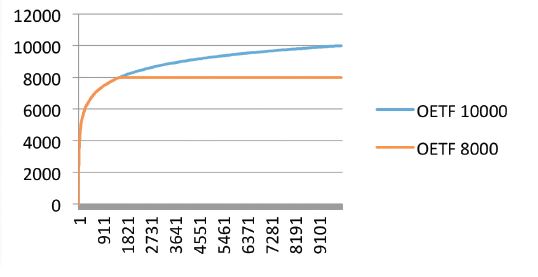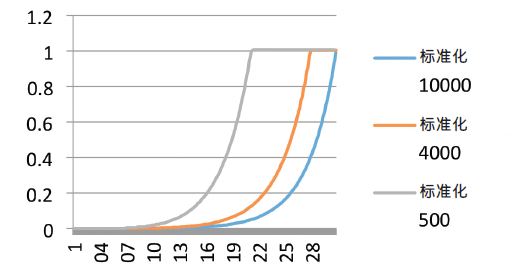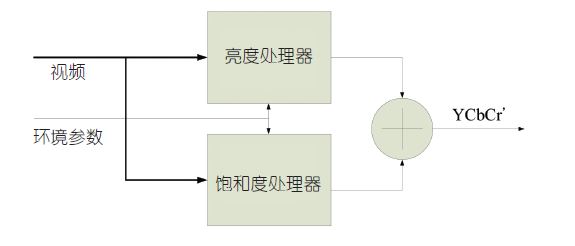For image display technology, the pursuit of a real world that is close to the human eye is an inevitable trend. The popularity of 4K TV technology, the use of wide color gamut, and the smoothness of video playback to 60fps have gradually advanced to the eye. In the next level, the “brightness dynamic range†is the level at which the current image display quality is desired to break through. At this time, "High Dynamic Range (HDR)" came into being, becoming the hottest topic of discussion in image display technology at the International Consumer Electronics Show (CES) in recent years, and various audio and video manufacturers have improved their images. The dynamic range is the goal, and the high dynamic range technology has been put into the process successively, and relevant standards have been set, and it is expected to check the quality of this high specification.
This article refers to the address: http://
This article first briefly introduces the HDR technology; then it introduces the well-known PQ-HDR, the "Dolby Vision" proposed perceptual quantization coding, and the mixed logarithmic gamma distribution developed by BBC/NHK. HLG-HDR), analysis of how to apply HDR technology to the display, so that the transmission is not distorted; finally, the actual case of the Integrated Service Technology (iST) signal test laboratory, how to introduce the current interface HDMI into the HDR And its corresponding certification standards.
HDR technology
What exactly is the difference between "HDR" in TV/movie and mobile/camera?
HDR, most people are familiar with the application of the camera, but the HDR technology used on the camera is completely different from the HDR of the TV video.
HDR of mobile phones/cameras: Most people should have the experience of taking photos with backlights. Most of the results of backlighting are not black-painted in the shadows, or the bright parts are all supersaturated. Therefore, the HDR of the mobile phone/camera is the multiple images taken by the exposure index, and then the chips are calculated into a complete photo by the chip; or, the regional photo is added or subtracted by a single photo. Light, calculus achieves highly dynamic imaging, giving each region a relatively clear image.
TV/film HDR: refers to a more standard/format. Since the video is a continuous dynamic image, if you want each frame of the display to be 3 to 5 combined like a camera, the bandwidth of the transmission is bound to increase by 3 to 5 times, this is not possible in a realistic environment. The HDR discussed in the video is defined by how to redistribute the photographic images of the advanced high dynamic wide color gamut and transmit them to the display, so that the display can correctly restore the advanced and highly dynamic images - this is also the author's assistance in the special laboratory. Many manufacturers of TFT/IPS TVs and projectors have found issues of concern to most manufacturers when they perform HDR adjustments.
Apply HDR technology to the display
First, discuss how Dolby Vision and BBC/NHK from Dolby Laboratories Inc. apply HDR technology to the display so that the transmission is not distorted.
(1) Dolby Vision PQ-HDR EOTF (Perceptual Quantization - HDR Electro-optical Conversion Function)
The Dolby Vsion white paper announced by Dolby Laboratories will be available in 2014 for the results of Dolby Laboratories' HDR, and will be included in the SMPTE 2084 specification by The Society of Motion Picture and Television Engineers (SMPTE). HDR is not only the focus of discussion on dynamic video recording and playback, but the version defined by SMPTE 2084 has also become the first generation specification for HDR products in the industry.
The core technology of Dolby HDR is called the Perceptual Quantizer (PQ) electro-optical conversion function (EOTF, which converts electrical signals into visible light). This technology defines the brightness standard at 10,000 Nits (ordinary TV brightness). Only about 100-200nits). However, there is currently no actual display device that can achieve this brightness, so the current Dolby Vision brightness target is 4,000 nits.
Current technologies for brightness processing, including CMOS and CCD sensors, have been able to sense images with high dynamic range brightness. However, how to properly process, store and transfer HDR images to the display? Dolby rearranges the brightness profile, increases transmission and processing. The bit width is up to 12bit, and the production environment parameters (meta data) are sent later to avoid the problem of non-continuous brightness after redistribution. It is also possible to accurately restore the HDR image when the image is transmitted to the display. (This technology is included in the SMPTE 2084 specification.)

1. Rearrange the brightness distribution curve and increase the transmission and processing depth to 12bit
Dolby's main core technology, the EOTF, is built in two parts: rearrange the brightness distribution curve according to Barten Ramp; and increase the transmission and processing depth by 12 bits.
According to Barten Ramp, when the dark part (very low brightness), the human eye has low visual sensitivity, and when the brightness is extremely high, the human eye feels more saturated with contrast, and this curve is constructed in the human eye just to distinguish the brightness change (JND). on. From the optical-electrical conversion function (OETF, EOTF reverse) curve of the image output end, it can be known that when the resolution of the dark portion is low, the jump order is relatively thick, and the bright portion is relatively sensitive, so the jump is dense. The correct brightness distribution can just contribute the extra order of the dark part to the bright part, so as to achieve the purpose of redistribution of brightness.
Increasing the transmission and processing depth to 12 bits ensures that this distribution change does not allow visual observation of discontinuities, and overall brightness can be obtained with more orders of processing units.

Figure 2: OETF curve at the output of the PQ-HDR image. The xy coordinates are 0 to 10000 brightness.
However, any image correction or redistribution technique must provide a restored mode at the same time, otherwise there will be some difficulties in the application. The technology before image output is OETF, and the video technology after image output processing is defined as EOTF, both of which are a "non-linear curve". However, when dealing with brightness correction and color gamut conversion issues, the signal must first be restored to a "linear curve" to reduce the complexity of subsequent processing.

Figure 3: EOTF curve at the output of the PQ-HDR image. The x coordinate is 0 to 1 normalized luminance, and the y coordinate is 0 to 1, 024 10-bit encoding.
After the image distribution curve is successfully restored, HDR separates the "brightness" and the "gamut". One of Dolby's processing methods is to convert the YCbCr color gamut to the IPT color gamut first, and then process the brightness and color saturation. Gamut mapping is proposed by a more complex 3D lookup table (3D LUT).
Of course, after using HDR technology, after EOTF linear reduction, it is not necessary to use the same processing method as above. Most of the chips have other customized processing methods, and the difference is in the final picture quality.

Figure 4: One of the PQ-HDR IPT processing methods.
2. Produce environmental parameters and send them
In order for the display to restore the image correctly, the environmental factors of the recording and post-production must be transmitted to the display for more accurate image restoration. The HDR environment parameters must contain the following important information (the details of the CEA-8614.3 specification and the HDMI2.0a specification can be seen):
- RGBW gamut range of the source
- the maximum / minimum brightness value of the display
- Maximum brightness value of video content (MAX CLL)
- Maximum brightness average in one frame (MAX Fall)
In practical application cases, for example, ED Labs received most of the HDR videos sent for testing. Most of them are dominated by DCI P3 color gamut and Mastering 4000 Cd/m2. Some other parts are not correct, so the monitor is processing. There may be some mechanism to determine if the environmental parameters are reasonable values.
After the HDR signal processing is completed, the display must also try to correct the brightness curve to Gamma 2.0 to 2.4 which is more suitable for the human eye, and restore the color to the color gamut defined by the display to complete the HDR display process.
Therefore, the correct calibration process should be to generate an HDR luminance signal from the signal source and generate corresponding environmental parameters. After receiving the environmental parameters, the display calculates an appropriate reduction curve and corrects it to a brightness distribution that conforms to the display specifications.
(ii) HBC-HDR scheme for BBC/NHK
The British BBC and Japan NHK TV also proposed the corresponding HDR scheme, called the Hybrid Log-Gamma (HLG). Compared with Dolby's PQ-HDR, the convenience of HLG in application is not The transfer of Meta data is required, and it can be executed by calculation on most existing display chips. Finally, the final display brightness and color gamut correction can achieve the effect claimed by HLG (Technical details refer to ITU-R) BT.2100.0 specification). This version has also become the second generation specification for HDR products in the industry.

Figure 5: HLG-HDR processing block diagram
Similar to PQ-HDR, HLG-HDR also proposes the corresponding OETF curve, but the HLG method is relatively simple and relatively accurate, and the signal source part encodes the brightness according to the HLG OETF distribution. The display part is based on the reverse OETF (OETF-1), first linearizes the signal and then customizes the brightness and color correction, and finally restores the brightness distribution defined by HLG according to the maximum and minimum brightness of the display screen and the ambient brightness. It is called the light-to-optical conversion function (OOTF).
The OOTF part of the HLG specifically adds the brightness of the environment, and the experimental results are presented in logarithmic (Log) manner, the relationship is as follows:
r=1+(1/5) *Log(Ypeak / Ysrround)
The complete EOTF contains the OOTF part:
Yd=αYsr+β
α=Lw-Lb (for Y range 0~1), β=Lb
Lw: standard brightness peak
Lb: Display luminance for black.
At present, the maximum brightness of HLG is only discussed at 1,000 Cd/m2, unlike PQ-HDR, which can be extended to 4000 or even 10,000 Cd/m2. It is interesting to note that in the ITU-R BT.2100 appendix, the PQ-HLG mutual conversion method is mentioned. In fact, as long as it can be reduced to a linear curve, the mutual conversion between the specifications can be achieved.

Import HDR and its corresponding authentication standard for HDMI
Since HDMI is the primary interface for display-type consumer products, most display products tend to qualify for HDMI HDR (HDMI 2.0a) as the first step in importing HDR products.
After the HDMI Association announced the HDR standard in 2015, it became the first wired transmission interface to import HDR, which is no longer limited to image streaming applications.
HDMI's current certification for HDR is limited to the Protocol section, which includes:
——HF1-53: Source Dynamic Range and Mastering InfoFrame–High Dynamic Range
——HF2-54: Sink EDID–HDR Static Metadata Data Block
——HF3-21: Repeater Repeated Output Port HDR
——HF3-22: Repeater Output Port Source Functionality HDR
——HF3-23: Repeater Repeated Input Port HDR
——HF3-24: Repeater Repeated Input Port Sink Functionality HDR
From the practical experience of the author in the Yite Signal Test Lab to assist customers in obtaining HDMI2.0a certification and HDR customization algorithm calibration and measurement, most of the customer display models, except for the "Extended Display Identification Code" (EDID, That is to say, the editing of the screen data such as the manufacturer name resolution and serial number may have some minor problems, and the customer can usually obtain the certification very smoothly.
High Speed Bag Making Machine,High-Speed Continuous Roll Bag Making Machine,Automatic Roll Bag Making Machine,Compound One System Bag Machine
Dongguan Yuantong Technology Co., Ltd. , https://www.ytbagmachine.com
